Abstract
Methotrexate (MTX) shows consistent cytotoxicity for melanoma cells in vitro but it is ineffective in clinical use at equivalent concentrations in vivo. This apparent paradox has been investigated by cell culture techniques and results quantified by cell number. In an in vitro model of high dose MTX therapy followed by leucovorin rescue (HD-MTX-LCR) there was survival of both melanoma and choriocarcinoma cell lines but not of an acute lymphocytic leukaemia cell line. The 70H metabolite of MTX was identified by HPLC in plasma samples of melanoma patients treated by HD-MTX-LCR, in which MTX concentrations approximately 10(-5) M were maintained for 24 h. However, metabolism per se is unlikely to account for the lack of response to MTX clinically. In vitro 70H MTX (10(-7) - 10(-6) M) was two orders of magnitude less cytotoxic for melanoma than MTX (10(-9) - 10(-8) M). The cellular accumulation of [3H]-MTX, using a rapid gradient centrifuge technique for separation of melanoma cells from medium, was reduced in the presence of 70H-MTX. The results suggest that reduced cellular uptake of MTX combined with biochemical rescue of tumour cells may partially explain the paradoxical lack of clinical response of melanoma to the drug.
Full text
PDF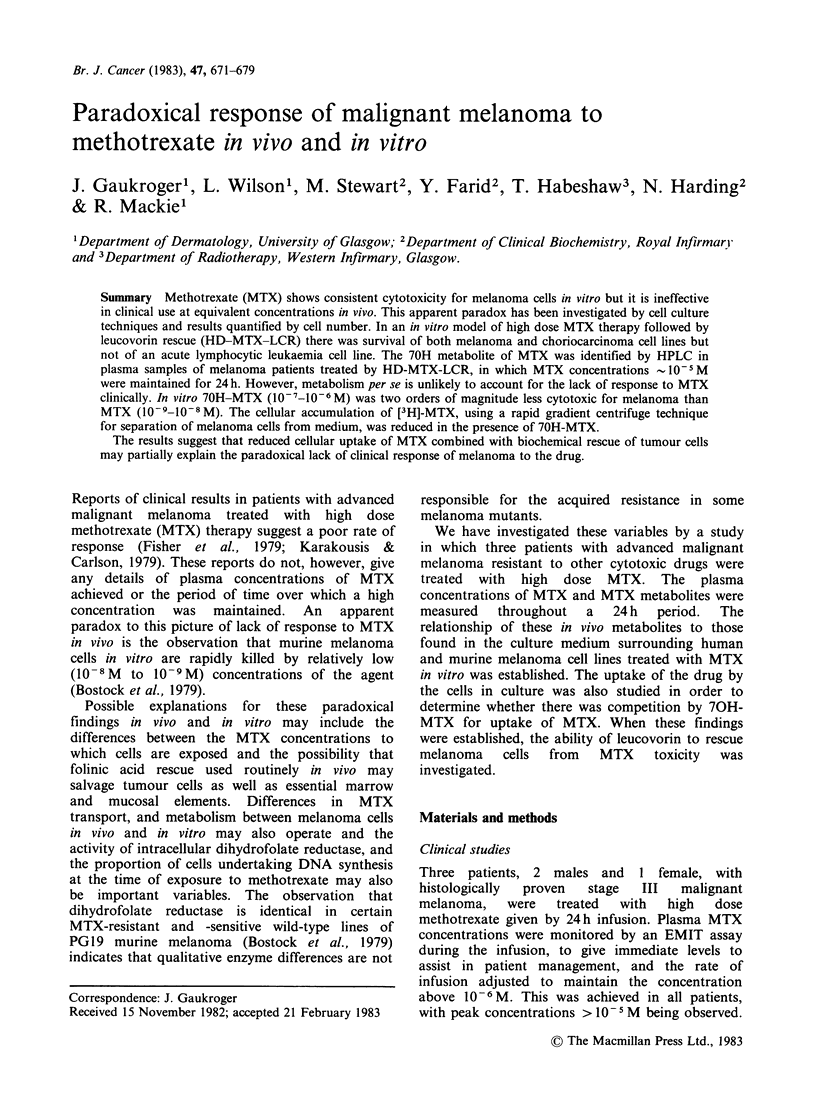
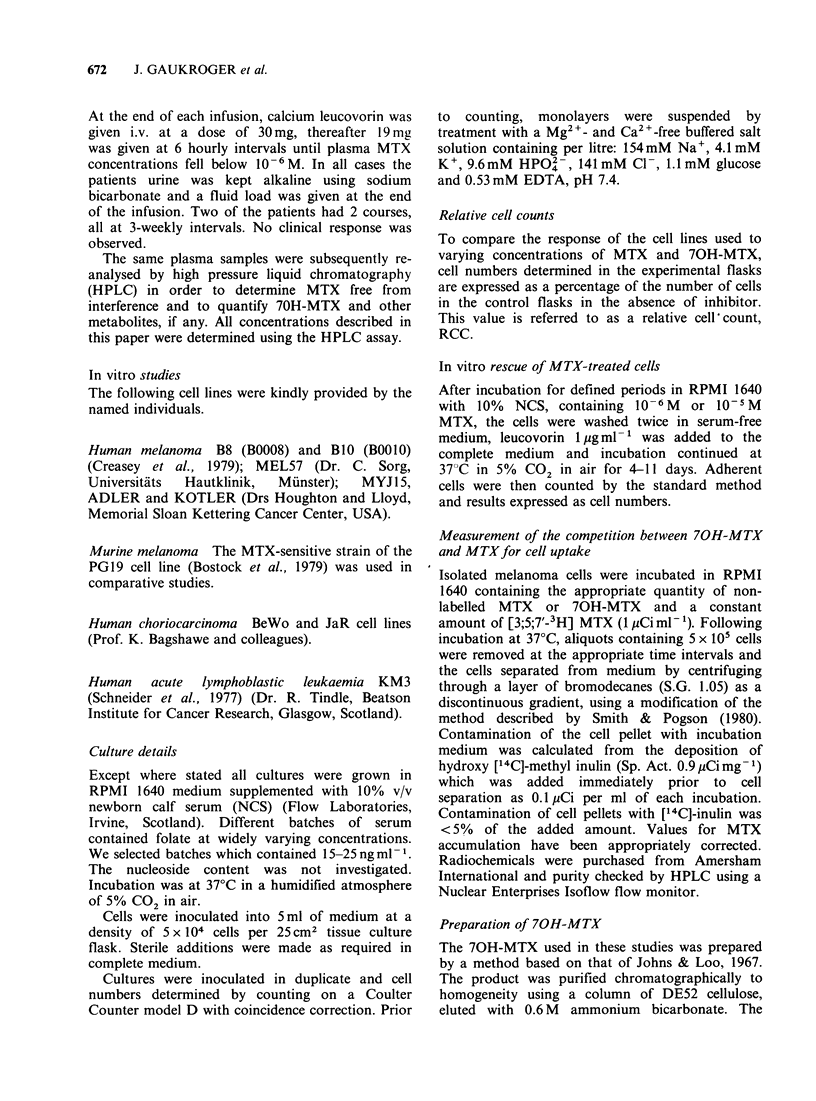
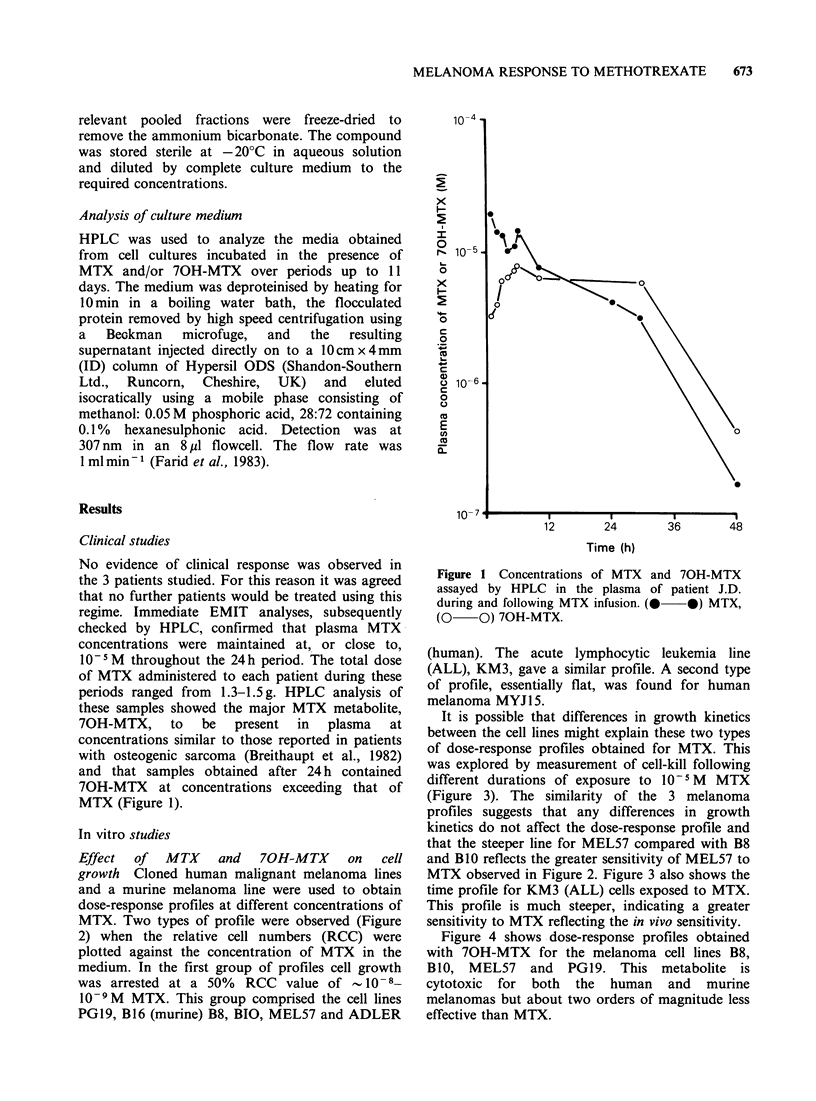
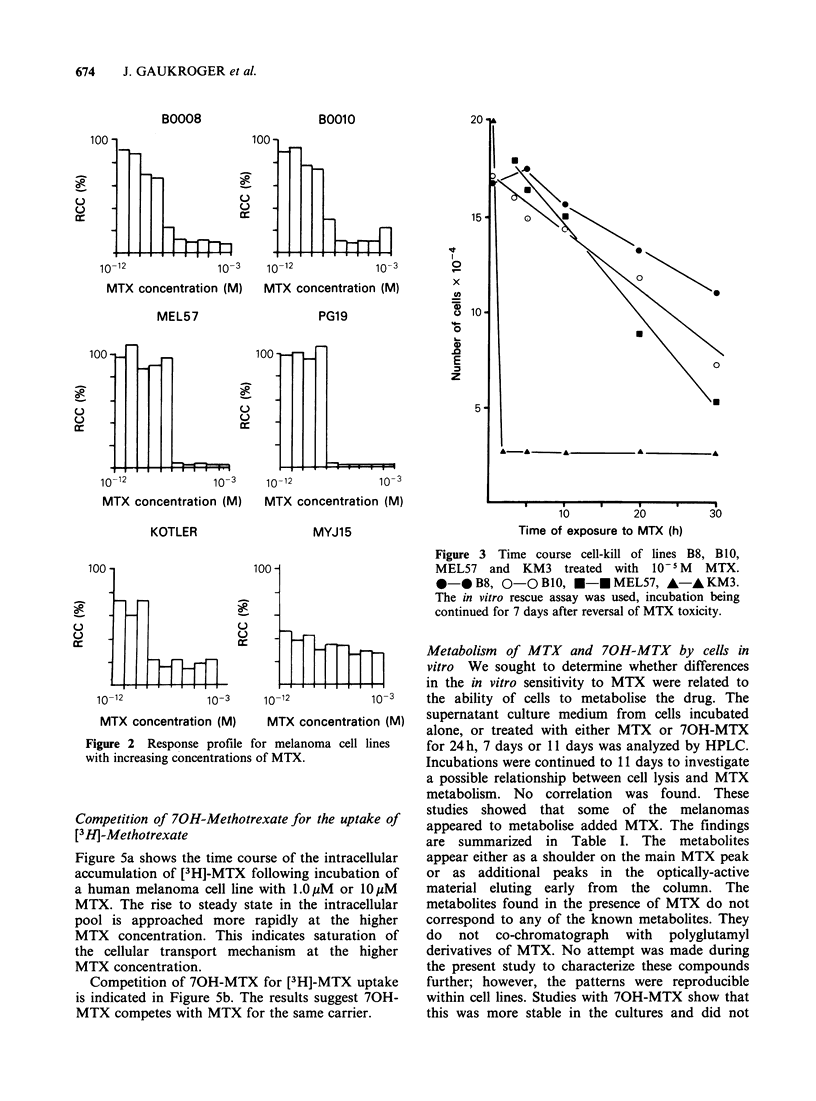
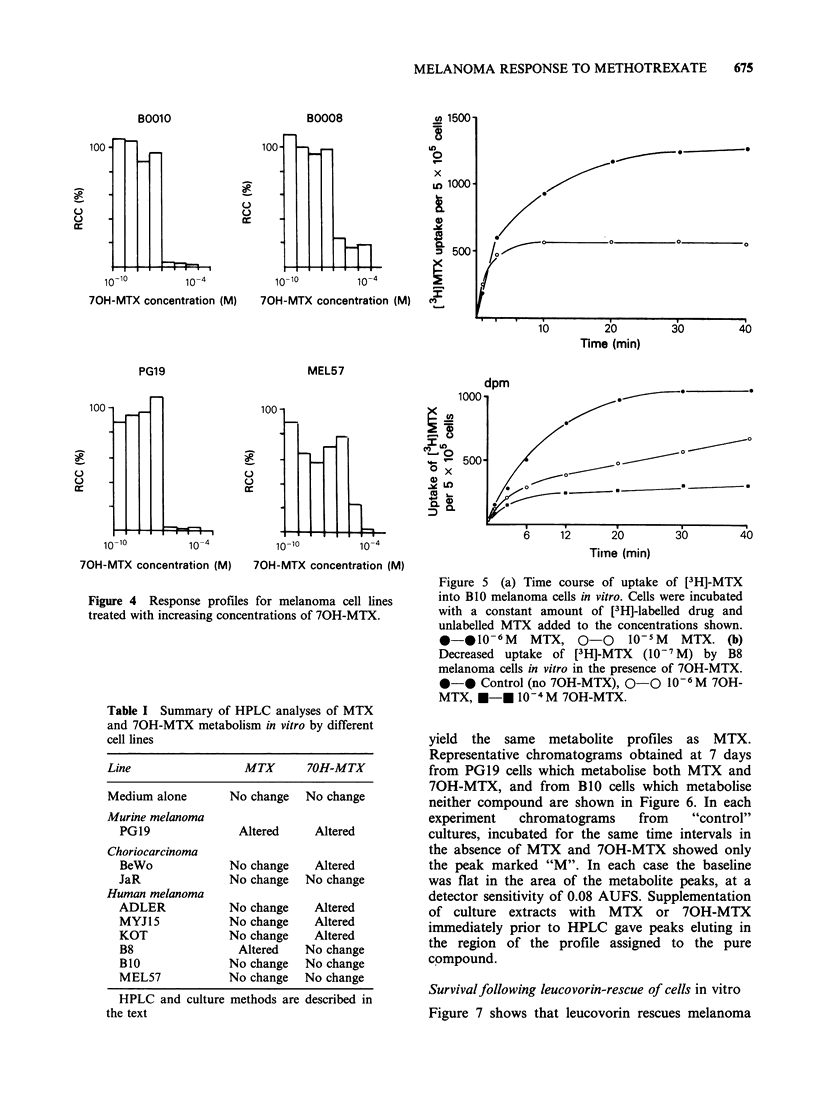
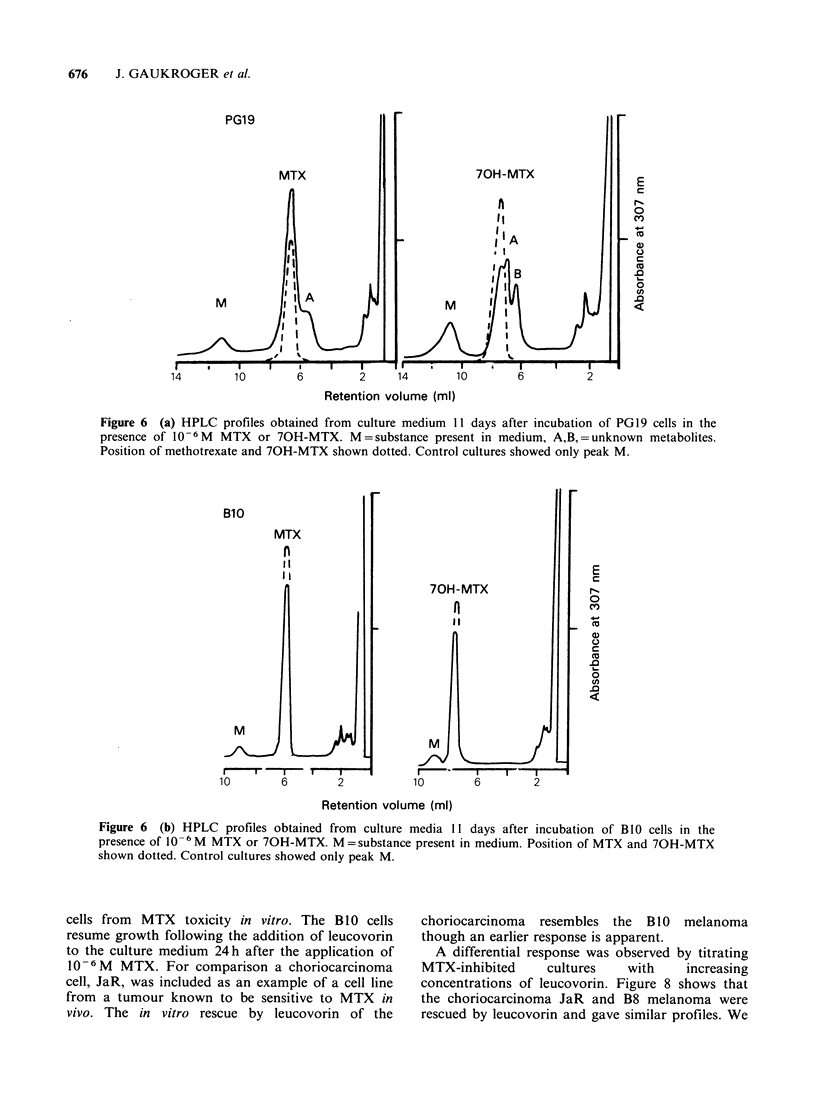
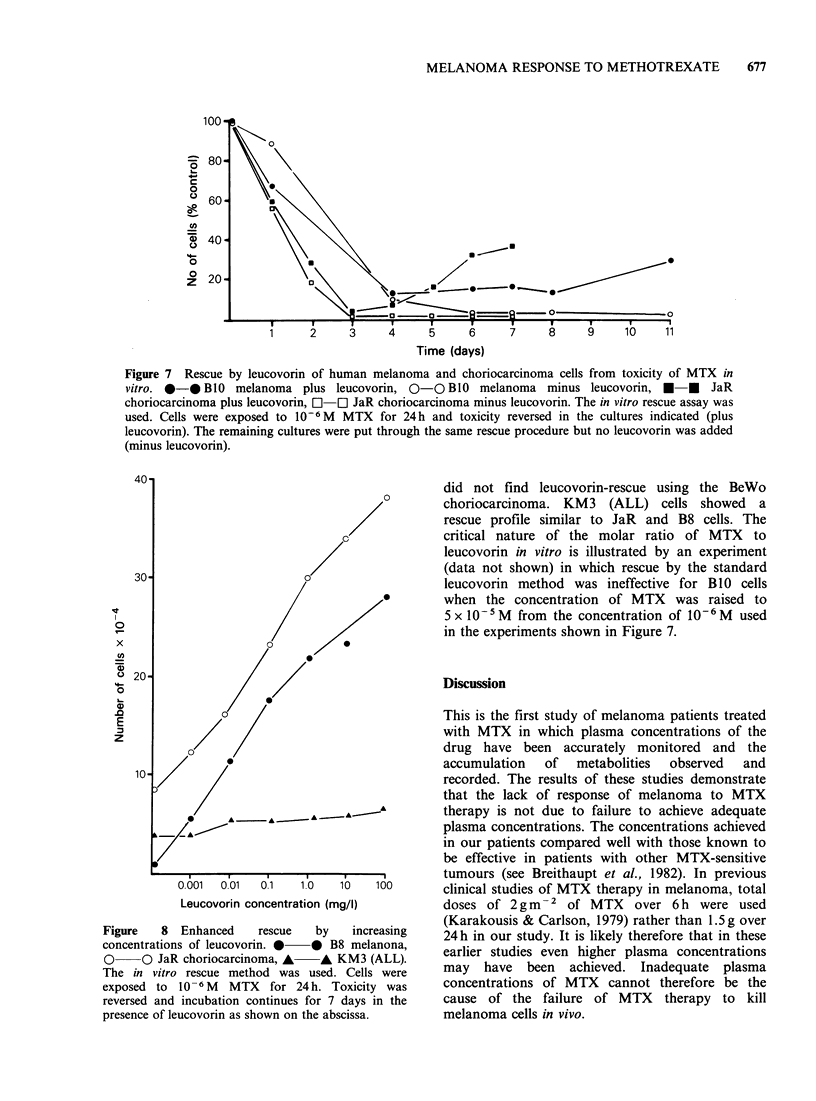
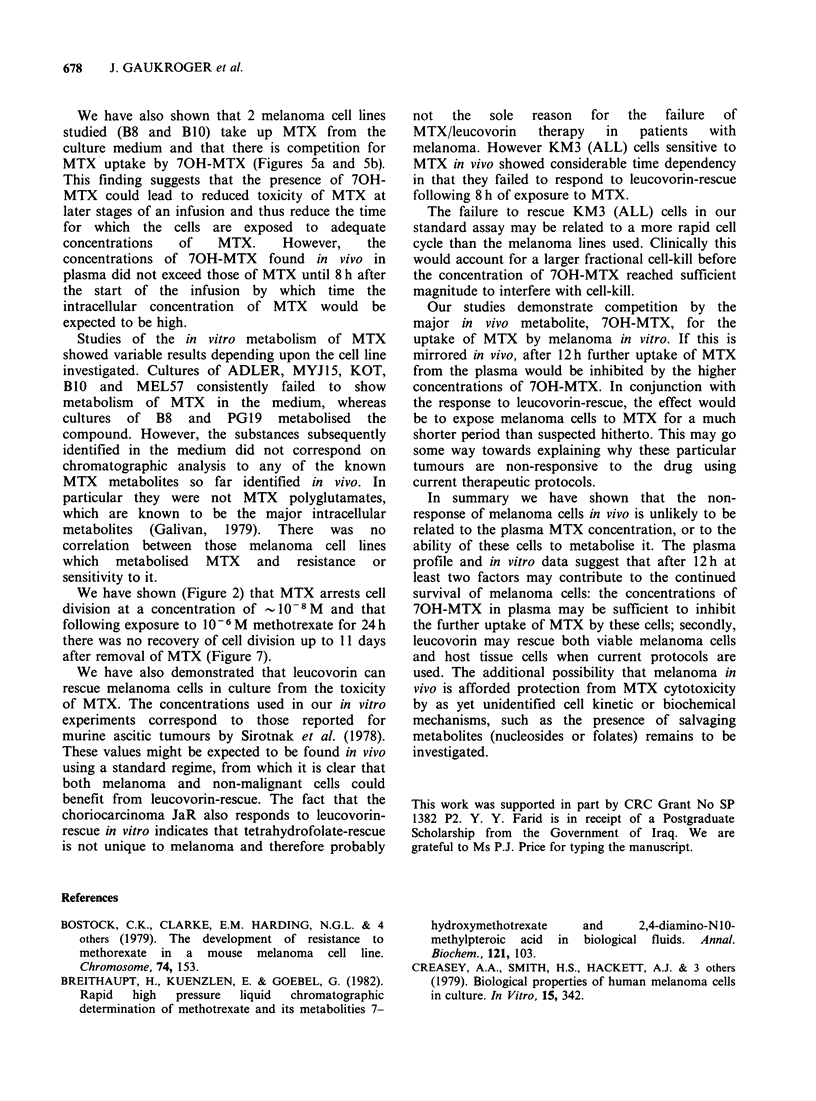
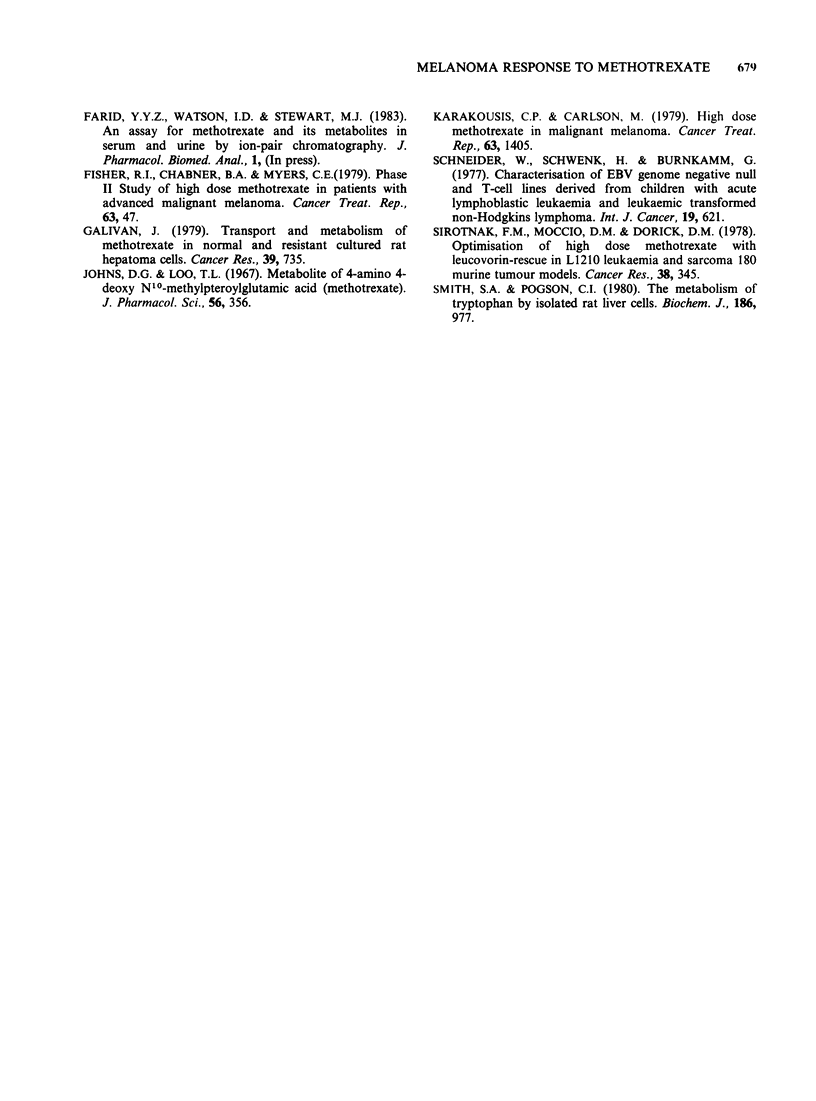
Selected References
These references are in PubMed. This may not be the complete list of references from this article.
- Bostock C. J., Clark E. M., Harding N. G., Mounts P. M., Tyler-Smith C., van Heyningen V., Walker P. M. The development of resistance to methotrexate in a mouse melanoma cell line. I. Characterisation of the dihydrofolate reductases and chromosomes in sensitive and resistant cells. Chromosoma. 1979;74(2):153–177. doi: 10.1007/BF00292270. [DOI] [PubMed] [Google Scholar]
- Breithaupt H., Küenzlen E., Goebel G. Rapid high-pressure liquid chromatographic determination of methotrexate and its metabolites 7-hydroxymethotrexate and 2,4-diamino-N(10)-methylpteroic acid in biological fluids. Anal Biochem. 1982 Mar 15;121(1):103–113. doi: 10.1016/0003-2697(82)90562-0. [DOI] [PubMed] [Google Scholar]
- Creasey A. A., Smith H. S., Hackett A. J., Fukuyama K., Epstein W. L., Madin S. H. Biological properties of human melanoma cells in culture. In Vitro. 1979 May;15(5):342–350. doi: 10.1007/BF02616140. [DOI] [PubMed] [Google Scholar]
- Galivan J. Transport and metabolism of methotrexate in normal and resistant cultured rat hepatoma cells. Cancer Res. 1979 Mar;39(3):735–743. [PubMed] [Google Scholar]
- Karakousis C. P., Carlson M. High-dose methotrexate in malignant melanoma. Cancer Treat Rep. 1979 Aug;63(8):1405–1407. [PubMed] [Google Scholar]
- Schneider U., Schwenk H. U., Bornkamm G. Characterization of EBV-genome negative "null" and "T" cell lines derived from children with acute lymphoblastic leukemia and leukemic transformed non-Hodgkin lymphoma. Int J Cancer. 1977 May 15;19(5):621–626. doi: 10.1002/ijc.2910190505. [DOI] [PubMed] [Google Scholar]
- Sirotnak F. M., Moccio D. M., Dorick D. M. Optimization of high-dose methotrexate with leucovorin rescue therapy in the L1210 leukemia and sarcoma 180 murine tumor models. Cancer Res. 1978 Feb;38(2):345–353. [PubMed] [Google Scholar]
- Smith S. A., Pogson C. I. The metabolism of L-tryptophan by isolated rat liver cells. Effect of albumin binding and amino acid competition on oxidatin of tryptophan by tryptophan 2,3-dioxygenase. Biochem J. 1980 Mar 15;186(3):977–986. doi: 10.1042/bj1860977. [DOI] [PMC free article] [PubMed] [Google Scholar]


